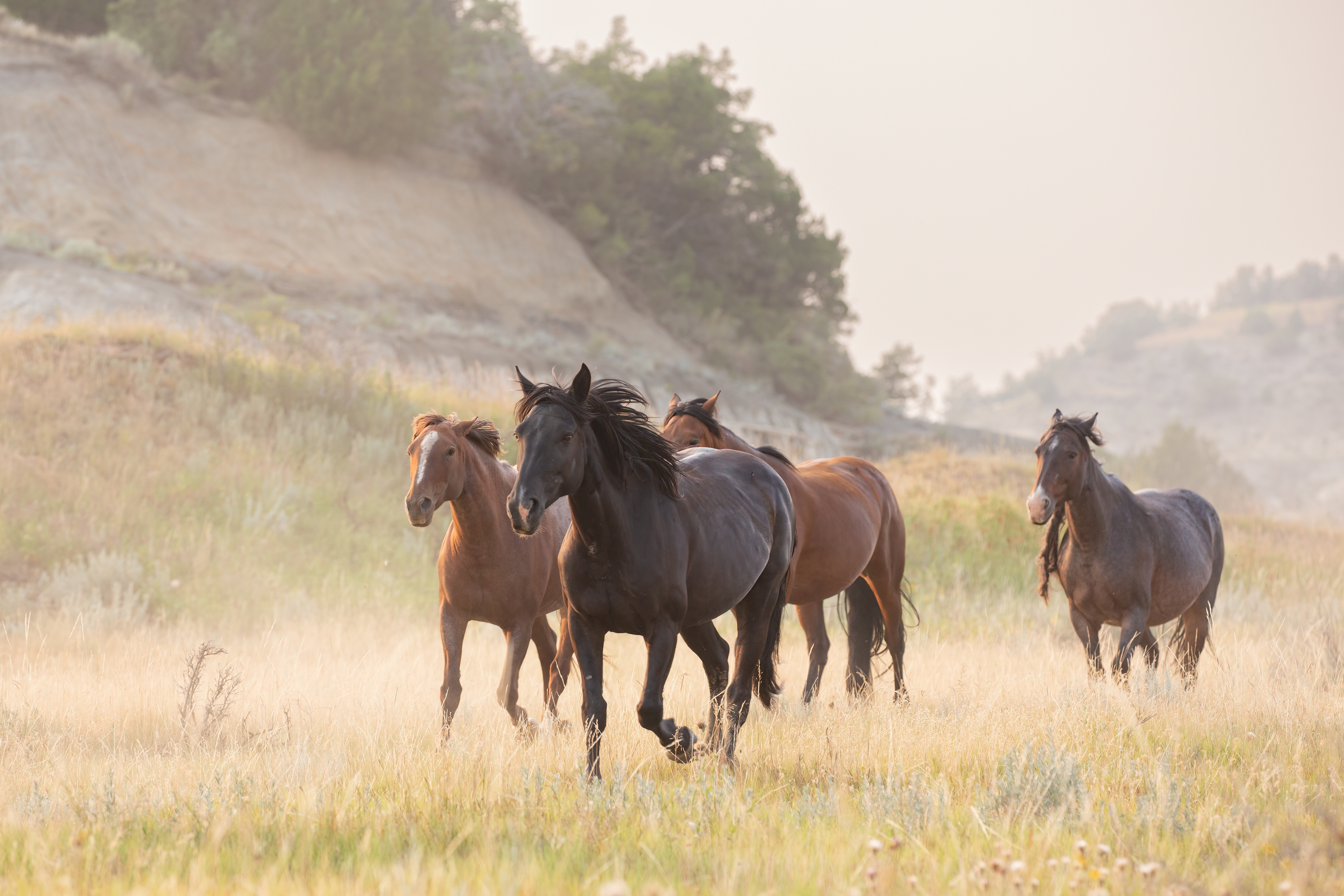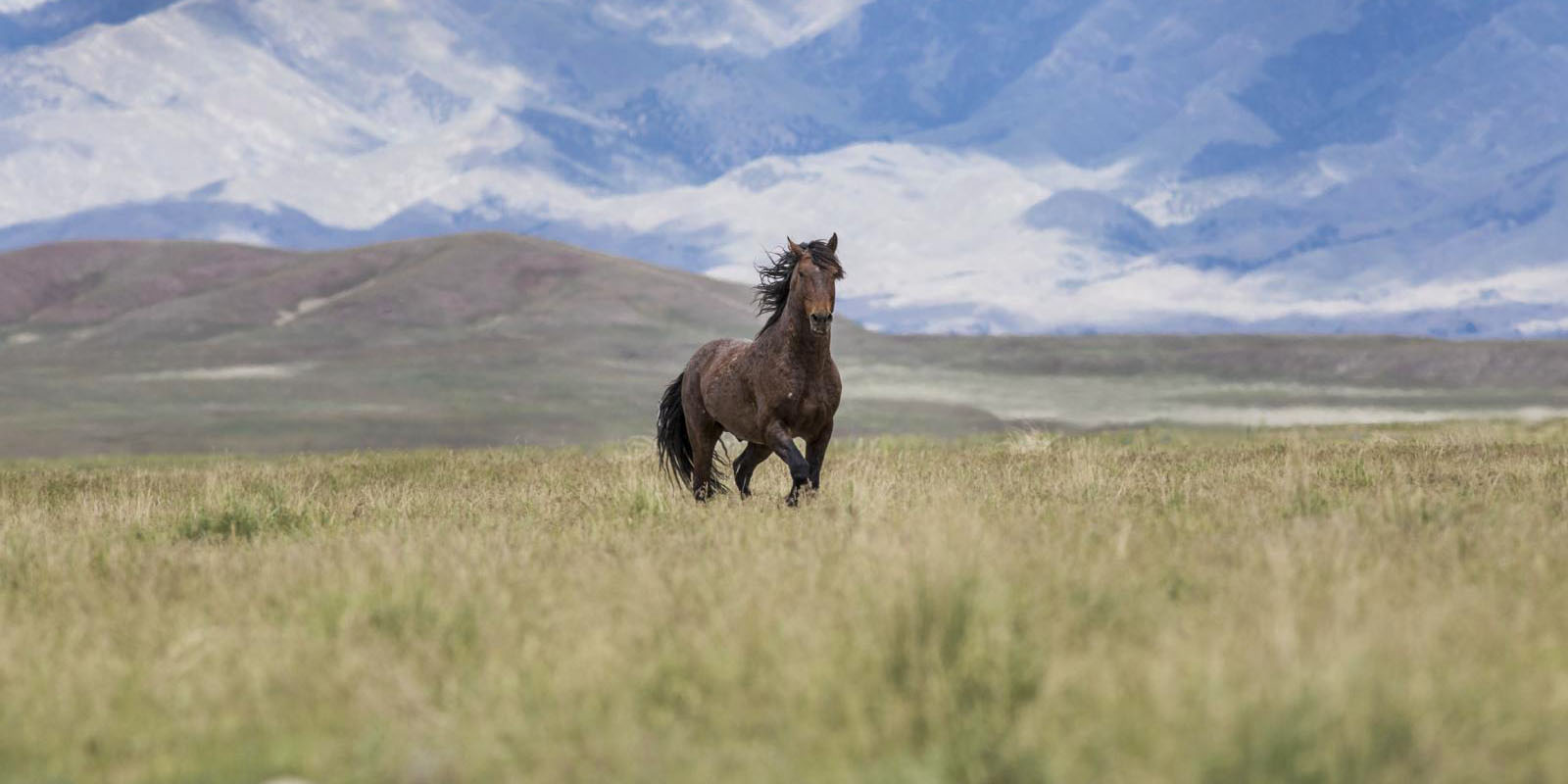By Mary Koncel, AWHC Special Programs Coordinator
(October 18, 2023) On Tuesday, October 10th, the National Park Services (NPS) held a virtual meeting on the Draft Environmental Assessment (EA) for the Livestock Plan for the Theodore Roosevelt National Park (TRNP/Park). During the presentation, TRNP staff made clear its plan to remove the historic wild horse herd from the Park, named after America’s first conservation president Theodore Roosevelt.
TRNP staff included Angie Richman, Superintendent at the TRNP; Blake McCann, Director of Resource Management and Science at TRNP; Maureen McGee-Ballinger, Deputy Superintendent at the TRNP; and Jenny Powers, Lead for the Wildlife Health Program for the NPS.
After briefly reviewing the four parts of the Draft EA, TRNP staff spent the remaining time answering questions from comments that have already been submitted in response to the EA as well as from participants in the virtual meeting.
About 195 horses reside in the South Unit of the Park. The three alternatives in the EA are to allow 35-60 horses to remain in the Park which would require the removal of about 150 horses; an expedited elimination of all the horses; and a phased elimination of all the horses.
In past meetings about the TRNP wild horses and the spring Scoping Letter, the NPS emphasized that the horses don’t belong in the Park because they are livestock and not native wildlife. While still maintaining this position, the NPS has added another justification for the horses’ removal: Secretary Order 3410 that seeks “to enhance the Department of the Interior's work to restore wild and healthy populations of American bison and the prairie grassland ecosystem” as well as the EA’s Purpose and Needs statement that supports this order by maintaining only native species on native prairie ecosystems.
In response to 30 plus questions asked during the virtual meeting, here are some of the answers that the TRNP staff provided:
- Removal of the horses will not affect tourism to Medora, the gateway city to the Park, and the state of North Dakota because the TRNP offers other attractions, including native wildlife such as bison and prairie dogs, and diverse habitats and landscapes. (The North Dakota Department of Tourism maintains the opposite is true and submitted scoping comments asking the NPS to keep the horses.)
- There’s a misconception among the public that the Park will kill horses. (The EA states multiple times that euthanasia of individual horses could be used under certain circumstances, including “those that the NPS is unable to place or sell (as a last resort).”
- It’s possible that some of the mares who were part of a 2009 -2015 GonaCon research project on the TRNP have not returned to fertility. (A 2020 email acquired from an AWHC FOIA request revealed that 19 out of 24 mares vaccinated with GonaCon during that study had not regained fertility since being boosted in 2013.)
- Managing the horse herd takes a significant amount of funding and Park staff time that could otherwise be used to preserve and protect the TRNP’s fundamental resources. (When AWHC asked the TRNP for the estimated cost of managing the wild horses in FY 2022 via its FAQ portal, the Park responded: “The management of livestock includes staff time and salary in addition to supplies and contracted services. Many of the associated activities and costs have not been tracked individually, therefore estimates of annual and long-term costs are not available.” Also, the NPS has not responded to North Dakota Governor Burgum, the North Dakota State Legislation, and nonprofits offers to provide extensive support to the TRNP for managing the herd.)
- An Environment Impact Statement (EIS) is not required because the NPS does not believe that the removal of this treasure wild horse herd will have significant impacts. (According to the National Environmental Policy Act (NEPA), Federal agencies should prepare an EIS if a proposed action is “determined to significantly affect the quality of the human environment. The regulatory requirements for an EIS are more detailed and rigorous than the requirements for an EA.” Given the controversial nature of the Livestock Plan EA and the myriad of legal, environmental, economic, and social issues that it raises but does not address, AWHC maintains that an EIS is needed.
Of special note, when asked why the notes from a three-day Livestock Plan and EA Overview Document Workshop that included TRNP, NPS, and Department of the Interior (DOI) staff in October 2022 was removed from the Reference Documents for the Livestock EA on the website, TRNP staff responded that it was an internal document and mistakenly uploaded.
That said, the workshop notes are an important read as they “connect the dots for the public about why alternatives changed between civic engagement and public scoping and why NPS is changing its focus from managing for a historic scene to managing for a native ecosystem.” You can view that document here.
One of the highlights of these 33 pages of meeting notes includes the group requesting the following information from a General Attorney at the Office of the Solicitor in the DOI who oversaw a legislative review related to horses and cattle and the historic scene at the TRNP:
- Since the 1970s, herds have increased on BLM lands and opportunities to see them now exist in many places.
- There are fewer opportunities to see bison in a natural setting and a native ecosystem.
- The historic scene in the 1978 EA reflected a management perspective at that time. Historic scene is not the emphasis now, it is managing for a native species, resources, and ecosystems.
- While Roosevelt noted that there were horses and cattle on the landscape, his stronger overarching message for the body of his work was his conservation-mindedness. Roosevelt viewed horses as an intrusion or runaway on the landscape as quoted in the 1978 EA.


